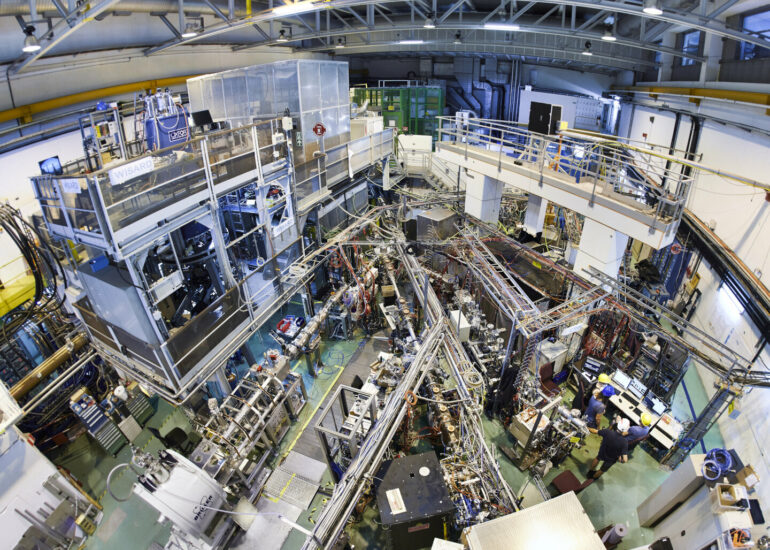Atomic clocks are the world’s most precise timekeepers. Based on periodic transitions between two electronic states of an atom, they can track the passage of time with a precision as high as one part in a quintillion, meaning that they won’t lose or gain a second over 30 billion years—more than twice the age of the universe.
In a paper published on May 24 in Nature, an international team at CERN’s nuclear physics facility, ISOLDE, reports a key step towards building a clock that would be based on a periodic transition between two states of an atomic nucleus—the nucleus of an isotope of the element thorium, thorium-229.
Such a nuclear clock could be more precise than today’s most precise atomic clocks, thanks to the different size and constituents of a nucleus compared to those of an atom. In addition, it could serve as a sensitive tool with which to search for new phenomena beyond the Standard Model, currently the best description there is of the subatomic world. For instance, it could allow researchers to look for variations over time of fundamental constants of nature and to search for ultralight dark matter.
Ever since 2003, when Ekkehard Peik and Christian Tamm proposed a nuclear clock based on the transition between the ground state of the thorium-229 nucleus and the first, higher-energy state (called an isomer), researchers have been racing to observe and characterize this nuclear transition.
In the two decades, researchers have measured with ever increasing precision the isomer’s energy, the precise value of which is required to develop lasers to drive the transition to the isomer. However, despite much effort, they have not succeeded in observing the light emitted in the transition from the isomer to the ground state. This phenomenon, known in nuclear physicists’ parlance as the radiative decay of the isomer, which has a relatively long lifetime, is a key ingredient in developing a nuclear clock, because it would allow, among other things, the isomer’s energy to be determined with higher precision.
A team working at ISOLDE has now achieved this feat by producing thorium-229 nuclei in the isomeric state in a novel way and investigating the nuclei using a technique called vacuum-ultraviolet spectroscopy. The wavelength of the observed light corresponds to an isomer’s energy of 8.338 electronvolts (eV) with an uncertainty of 0.024 eV—a value that is seven times more precise than the previous most precise measurements.
Significant to the team’s success was the production of isomeric thorium-229 nuclei via the so-called beta decay of actinium-229 isotopes, which were made at ISOLDE and incorporated in calcium fluoride or magnesium fluoride crystals.
“ISOLDE is currently one of only two facilities in the world that can produce actinium-229 isotopes,” says the main author of the paper, Sandro Kraemer. “By incorporating these isotopes in calcium fluoride or magnesium fluoride crystals, we produced many more isomeric thorium-229 nuclei and increased our chances of observing their radiative decay.”
The novel approach of producing thorium-229 nuclei also made it possible to determine the lifetime of the isomer in the magnesium fluoride crystal. Knowledge of this lifetime is needed to predict the precision of a thorium-229 nuclear clock based on this solid-state system. The long lifetime that was measured, namely 16.1 minutes with an uncertainty of 2.5 minutes, confirms theoretical estimates and indicates that a clock precision competitive with that of today’s most precise atomic clocks is attainable.
“Solid-state systems such as magnesium fluoride crystals are one of two possible settings in which to build a future thorium-229 nuclear clock,” says the team’s spokesperson, Piet Van Duppen. “Our study marks a crucial step in this direction, and it will facilitate the development of the lasers needed to drive the periodic transition that would make such a clock tick.”
More information:
Sandro Kraemer et al, Observation of the radiative decay of the 229Th nuclear clock isomer, Nature (2023). DOI: 10.1038/s41586-023-05894-z
Citation:
CERN facility takes a solid tick forward towards a nuclear clock (2023, May 25)



